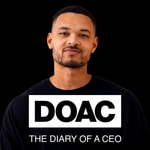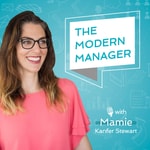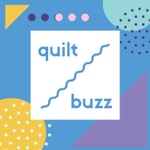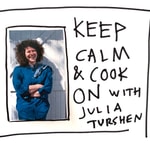FRIED. The Burnout Podcast – Details, episodes & analysis
Podcast details
Technical and general information from the podcast's RSS feed.
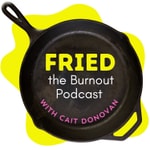
FRIED. The Burnout Podcast
Cait Donovan
Frequency: 1 episode/7d. Total Eps: 305

Real. Raw. No Holding Back. Stories from people like you who've burnt out and come back to tell the tale. From thought leaders to your friend down the street, there's a story in FRIED that you will relate to, guaranteed.
You are not alone. You might be fried crispy at this point, but I promise you there is a way through. Each week, there is a story of breakdown and build back up and we don't skip over the nasty bits. The journey through burnout is rarely a beautiful one, but it creates some pretty amazing careers and lives. The point of this space is to assure you that you aren't alone and that there is a way through. If one week doesn't resonate, be sure that another week will. There's a solution for every story and we will cover them all. I promise.
And - the help doesn't stop there. UNFRIED is a small group coaching program (under 10 people per cohort) that is available for you. Find the info here. (bit.ly/UNFRIED)
Recent rankings
Latest chart positions across Apple Podcasts and Spotify rankings.
Apple Podcasts
🇨🇦 Canada - mentalHealth
21/07/2025#81🇨🇦 Canada - mentalHealth
03/07/2025#80🇨🇦 Canada - mentalHealth
11/06/2025#99🇨🇦 Canada - mentalHealth
12/05/2025#63🇨🇦 Canada - mentalHealth
10/05/2025#76🇨🇦 Canada - mentalHealth
09/05/2025#77🇨🇦 Canada - mentalHealth
08/05/2025#82🇨🇦 Canada - mentalHealth
02/05/2025#97🇨🇦 Canada - mentalHealth
01/01/2025#81🇨🇦 Canada - mentalHealth
10/12/2024#98
Spotify
No recent rankings available
Shared links between episodes and podcasts
Links found in episode descriptions and other podcasts that share them.
See all- https://www.crisistextline.org/
1374 shares
- https://johnneral.com
712 shares
- http://hivecast.fm
673 shares
RSS feed quality and score
Technical evaluation of the podcast's RSS feed quality and structure.
See allScore global : 48%
Publication history
Monthly episode publishing history over the past years.
#straightfromcait: Getting Out Of The Toxic Workplace Burnout Cycle
dimanche 29 septembre 2024 • Duration 12:15
Ready to leave burnout behind for good? Join UNFRIED: A Small Group Burnout Recovery Program and start reclaiming your energy and joy. Apply today! https://bit.ly/unfryapply
“The problem isn’t you; the problem is the toxic workplace,” explains host Caitlin Donovan on this latest #straightfromcait episode of FRIED, in which she discusses the dangers of returning to a toxic workplace only to repeat the burnout cycle again, as if you never made any recovery progress. Too often we’re led to believe that if we improve ourselves enough, we can develop an immunity against a bad environment, which, as Cait says, simply isn’t true.
On today’s episode, she explains why you should reconsider returning to your toxic workplace, and, if you do find yourself there, what to do if you find yourself unsupported. She discusses the common feelings of isolation, loneliness, emotional and mental paralysis and low self-esteem that accompany this scenario, and the devastating effects of bullies in the workplace.
You’ve come too far in your burnout recovery to jump back into the very situation that got you burned out in the first place. Join Cait today to learn the importance of being aware of, and listening to your body responses, to better detect and determine if your environment is safe.
Quotes
- “What happens, because of pop culture and pop psychology, is people assume that if they just get stronger, have better boundaries or can manage their emotions better, that somehow they will be able to manage and handle a toxic environment. That would be like saying, ‘If I just meditate enough, I can swim in toxic chemicals and they won’t bother my body.’ That’s just not true.” (2:56 | Caitlin Donovan)
- “There are a lot of people who explain that they, after something like this happens, are left with really low confidence. They’re feeling worthless, they feel socially isolated. They don’t know how to search for a new job; they’re nervous about searching for a new job. They’re wondering if they’ll ever be able to work again. Their social circle often doesn’t know how to respond, which is not their social circle’s fault, most people are just not educated well enough in the realms of burnout to have these conversations easily.” (6:37 | Caitlin Donovan)
- “And then that social isolation turns into loneliness, and you feel like the odd one out and you feel like, ‘Oh, my God, why is everybody around me making it in life and I can’t hang, I can’t hack it.’ And then that turns into a general feeling of despair.” (7:08 | Caitlin Donovan)
- “It only takes one bully, one crappy boss to set things totally sideways. And I know that people who work in HR and leaders don’t want to hear that one crappy boss can really ruin it like that for someone, but they can, and they do, and the cost is magnificent. The cost is immense for this person.” (9:38 | Caitlin Donovan)
Links
Connect with Cait:
Initial Call with Cait: bit.ly/callcait
Initial Call with Sarah: bit.ly/callsarahv
Ready to leave burnout behind for good? Join UNFRIED: A Small Group Burnout Recovery Program and start reclaiming your energy and joy. Apply today! https://bit.ly/unfryapply
Podcast production and show notes provided by HiveCast.fm
Daisy Auger-Dominguez: Burnt Out Leaders Lead Burnt Out Teams
dimanche 22 septembre 2024 • Duration 54:10
Ready to leave burnout behind for good? Join UNFRIED: A Small Group Burnout Recovery Program and start reclaiming your energy and joy. Apply today! https://bit.ly/unfryapply
“How do we rewrite the playbook together?” asks Daisy Auger-Dominguez, global leader, workplace strategist and author of the upcoming book “From Burnt Out to Lit Up,” on today’s episode of FRIED. The contemporary workplace is in major flux at the moment. In addition to being in collective burnout that we’ve just been able to give a name to, we’re also in what Daisy calls a “messy middle,” where workers are still learning how to effectively use their voices and leaders are trying to navigate these rapidly changing waters with archaic methods. So, how can leaders gain the skills to lead high-performing teams, shift workplace culture, and drive performance without causing more burnout? By showing up differently, modeling vulnerability and humanity for their workers, so that they feel seen, can heal, and eventually, help change the system from the inside out.
Today Daisy talks about what it takes to do such healing. It includes being conscious of your sacrifices, weighing the pros and cons of your decisions, replenishing your social battery and staying on top of your cultural debt. Many leaders fall into the trap of thinking they’re needed everywhere 24/7—when delegating not only eases the leader’s burden but lets capable workers shine.
Daisy explains how we can acknowledge the undue burden many groups experience in the workplace while exercising agency that helps not only us thrive but others as well. By rewriting the stories we tell ourselves, we help remodel the current paradigm of workplace culture into something better.
Quotes
- “That’s what we’re hoping for from our leaders. We’re hoping that they will help us, get us to the other side, and that they will do so vulnerably; that they will do so with humanity; and that they will do so in a way that allows us to feel seen, validated and understood so that we can deliver to our best capacity.” (9:24 | Daisy Auger-Dominguez)
- “I do believe that when you tell the world that you have boundaries, you tell the world that you matter. But I also think …what I do for me is also what I model for others so that—they don’t have to do what I’m doing, but they can create the conditions where they can thrive.” (20:40 | Daisy Auger-Dominguez)
- “One of the practices in the book that I share is about reframing our narratives, reframing our stories, because for a long time, the story I told myself was, ‘As a woman… As a woman of color…’’ all these ‘only’ characteristics that you have, I needed to show up differently. And to be fair, and this is to your naysayer listener, I had to. I really did have to.” (24:07 | Daisy Auger-Dominguez)
- “I know the system has failed me, but how do I exercise my agency to figure out how I thrive in this way, and by doing that, help change the system? Because by my figuring out, ‘How do I show up differently, and ‘How do I help others show up differently,’ we help build that new leadership. We were just talking about how most leaders are using the same old playbook. Well, how do we rewrite the playbook together?” (27:02 | Daisy Auger-Dominguez)
Links
Connect with Daisy Auger-Dominguez:
https://www.daisyauger-dominguez.com
https://www.instagram.com/daisyaugerdominguez/ https://www.linkedin.com/in/daisyaugerdominguez/
Connect with Cait:
Initial Call with Cait: bit.ly/callcait
Initial Call with Sarah: bit.ly/callsarahv
Burnout doesn’t have to be your story. Apply to UNFRIED: A Small Group Burnout Recovery Program and start your journey toward lasting recovery. Spots are limited—apply now! https://bit.ly/unfryapply
#straightfromcait: Top 6 Workplace Factors that Burn You Out
dimanche 21 juillet 2024 • Duration 11:47
Host Cait Donovan is back with another #straightfromcait episode, this time discussing the six factors which leave you most vulnerable to workplace burnout. Drawing from leading research, she will explain how you can evaluate these factors in order to make the best decisions for yourself going forward.
These factors will be all too familiar to longtime FRIED listeners—or anyone going through burnout recovery. Cait discusses the many ways that values can misalign in the workplace as well as how to respond when you feel your contributions are being under appreciated. She’ll reveal just how many friends the average person needs to have in the workplace, according to research, and how to deal with a micromanaging boss.
Tune in to today’s episode where you’ll also learn how to deal with a lack of autonomy and how to determine when your workload is unmanageable.
Quotes
- “If you know these things, then you can start to make some changes, see where things can be shifted and where they can’t be shifted and then maybe make some better decisions moving forward in your workplace.” (1:44 | Caitlin Donovan)
- “If you have high levels of job strain and low levels of resources, that becomes an unbearable workload.” (2:28 | Caitlin Donovan)
- “There’s a ton of research that says that you need one solid friend in the workplace in order to feel like somebody’s got your back and to feel connected to your workplace.” (3:08 | Caitlin Donovan)
- “There’s only so much you can do when someone hasn’t learned how to trust the people that work for them. You can’t change that for them, that’s their own stuff that they’ve got to work through. The only control you have is whether or not you work under this person.” (5:18 | Caitlin Donovan)
- “If you’re feeling a lack of fairness, you need to know what it’s about in order to decide whether or not you can influence it.” (7:47 | Caitlin Donovan)
Links
Connect with Cait:
Initial Call with Cait: bit.ly/callcait
Initial Call with Sarah: bit.ly/callsarahv
Burnout doesn’t have to be your story. Apply to UNFRIED: A Small Group Burnout Recovery Program and start your journey toward lasting recovery. Spots are limited—apply now! (https://bit.ly/unfryapply)
Farnoosh Torabi: Financial Safety, Knowing When to Quit, and Creative Money Making
Season 5 · Episode 29
dimanche 16 octobre 2022 • Duration 51:22
Farnoosh Torabi is an award winning personal finance journalist, author, keynote speaker, television reporter, and host of the So Money podcast. She uses her 20 years of experience to help people master their money. While living in New York City with her husband, she realized that changes needed to be made to their lifestyle to reduce stress and improve their overall quality of life. They ended up deciding to move out of the city to save money, which ultimately reduced stress and opened up more time for other opportunities. Now Farnoosh helps everyone from entrepreneurs to influencers learn how to manage their finances and make the most of their money.
“When I was a little girl, I thought two things equaled freedom, and I don't think I was wrong. Money in the bank and a driver's license,” shares Farnoosh Torabi. She explains that having money literally puts you in the driver’s seat of your own life. It provides you with agency over your decisions that no one else can question. A lot of entrepreneurs are glamorized for taking big risks, maxing out their credit cards, and starving themselves while they try to get their business running. This should not be the norm at all. Instead, it is better to not treat it like a race and to spend as much time as necessary building financial security prior to starting a business. There are many opportunities to earn money nowadays outside of a traditional 9 to 5. You can make extra money by taking up an hourly gig, pet sitting, selling unwanted items on Facebook Marketplace, babysitting, or in any number of ways. The most important thing is to reframe your idea of success and of what a job is supposed to be and recognize that a job can truly be just a job. You do not have to monetize your passions or be extremely emotionally invested in your job.
There are a lot of misconceptions about finances and it is important to be innovative when it comes to finding ways to make and save money. People are living longer and retirement at 60 is no longer the goal for everyone, nor is it necessarily attainable. However, a pension is not the only way to secure financial stability for your future and it is vital to save money regardless, because that pension is not guaranteed in today’s world. Tune into today’s episode of FRIED. The Burnout Podcast for a conversation with Farnoosh Torabi about how to build financial safety, when to quit a job and when to stick it out, and creative ways to make extra money.
Quotes
· “I remember picking up a book called The Upside of Stress. Because I was like, I need to learn how to live with this. I don't think this is going away.” (7:09-7:17 | Farnoosh)
· “Changing your definition of success is one of the key factors in creating a burnout proof life after you've recovered. Because you can't go back to the system that you were in. You are not going to build enough resilience to live in that system as it is unless some of it changes.” (14:44-15:02 | Cait)
· “When you are burned out at work, maybe the response is not to quit, but rather, ‘Have you even had a conversation with your manager?’ And so you don't have to throw out the baby with the bathwater. You don't have to think, 'Well, my only option is to quit and lose everything that I've worked towards.'” (20:46-21:02 | Farnoosh)
· “When you feel behind in your 40s, don't let that discourage you from just continuing the good work of putting the consistent money into that bank account, into that investment account, because it is never too late.” (28:47-29:01 | Farnoosh)
· “When I was a little girl, I thought two things equaled freedom, and I don't think I was wrong. Money in the bank, and a driver's license.” (41:22-41:30 | Farnoosh)
· “Don't tell me that money doesn't earn you safety. It at least buys you the opportunity to make choices for yourself that nobody else can enforce. It gives you agency.” (43:40-43:51 | Farnoosh)
· “Sometimes it's really about a reframe, and thinking like, ‘Okay, well, this job, I'm grateful for the fact that I can do it. The paycheck comes every two weeks. I get benefits. I get some paid time off. And then I can go and live the other life that I have.” (47:18-47:33 | Farnoosh)
Links
Connect with Farnoosh Torabi:
http://www.instagram.com/farnooshtorabi
https://www.cnet.com/feature/signup-so-money/
XOXO,
C
If you know that it’s time to actually DO something about the burnout cycle you’ve been in for too long - book your free consult today: bit.ly/callcait
https://friedtheburnoutpodcast.com/quiz
#straightfromcait: Burnout Risk Factors - A Holistic View
Season 5 · Episode 28
dimanche 9 octobre 2022 • Duration 18:04
There are many risk factors for burnout. The good news is that each risk factor is multidirectional and by working on any one of them, you are likely to positively change others. It can feel overwhelming to confront all of the risk factors for burnout, so in today’s #straightfromcait episode, Cait breaks them all down into six overarching categories. These categories are workplace, family, self, culture, environment, and health.
Here in the United States there is an extreme amount of pressure and importance placed on hard work and individuality. The issue with these being the major cultural values is that overworking can and does quite literally cause death through having an overall negative impact on long-term health. In addition, relying completely on yourself to accomplish every single thing and not leaning into the strength of our communities is a large contributor to eventual burnout. When considering burnout, the majority of research comes from workplace studies, however, there are several other categories to consider for a broader view. How you were raised, the family you have currently, the environment you live and work in, and your physical and mental health conditions all contribute toward burnout in their own ways. By setting aside time for self care, making necessary lifestyle changes, and really considering each of the burnout risk factors that you identify with, you can make lasting and significant changes that help you to prevent or heal from burnout.
The risk factors for burnout are too numerous to count, but they do all tend to fall into six main interconnected categories. By making improvements in one area, you are likely influencing several others at the same time. Tune into this week’s #straightfromcait episode for a conversation about the six categories of burnout risk factors. Learn what to keep an eye out for and what changes to make in order to positively influence your burnout recovery or even to prevent burnout before it occurs.
Quotes
· “We might be talking about some sort of family trauma, and you have to know that that affects your environment. And that also affects your health. And it also affects your sense of self and how you function in the world. Right? So there's a lot going on here. Everything affects everything else.” (4:28-4:45 | Cait)
· “A study that was combined between the World Health Organization and the International Labor Org showed that working 55 plus hours a week resulted in approximately three quarters of a million deaths over the course of a year through stroke and heart attack mostly. And this was shown to be especially true for those over 45.” (5:38-5:59 | Cait)
· “If it is an epigenetic change, we can affect change on it. Because epigenetics are fluid, right? We can move them, they can change. But it does require a lot of self care.” (12:20-12:31 | Cait)
· “If you did not have access to or take advantage of access to green space, being in nature, your overall health will suffer and your energy will suffer and increase your risk of burnout.” (12:58-13:09 | Cait)
Links
https://caitdonovan.as.me/free
https://caitdonovan.as.me/inquiry
These references should be in the show notes:
REFERENCES
Bar, M., & Maital, N. (2007) Visual elements of subjective preference modulate amygdala activation.” Neuropsychologia. 45(10). pp. 2191-2200. 10.1016/j.neuropsychologia.2007.03.008.
Berk, L. (2019). Exploring Adult and Adolescent Development. Pearson. Cht 3.
Huberman Lab. (2022). Using light to optimize health. https://hubermanlab.com/using-light-sunlight-blue-light-and-red-light-to-optimize-health/
Ishizu, T., and Semir Z. (2011). Toward a brain-based theory of beauty. PLOS One, https://doi.org/10.1371/journal.pone.0021852.
Maslach, C., Schaufeli, W.B., Leiter, M.P. (2001). Job burnout. Annual Reviews of Psychology. 52. 397-422
World Health Organization. (2021). Long working hours increasing deaths from heart disease and stroke. https://www.who.int/news/item/17-05-2021-long-working-hours-increasing-deaths-from-heart-disease-and-stroke-who-ilo
XOXO,
C
If you know that it’s time to actually DO something about the burnout cycle you’ve been in for too long - book your free consult today: bit.ly/callcait
https://friedtheburnoutpodcast.com/quiz
Nicole Kalil: Head Trash vs Inner Knowing: How to Build Self Trust and Confidence
Season 5 · Episode 27
dimanche 2 octobre 2022 • Duration 45:35
Nicole Kalil is a speaker, leadership strategist, respected coach, author, and podcast host. She spent 15 years working for a financial planning company where she was frequently the only woman in the room. After so many years of working hard for promotions, pushing down her feminine qualities in favor of leaning into more stereotypically masculine traits, Nicole realized she no longer even knew who she was authentically anymore. She had become so burned out that she hated her job, hated the people around her, and had lost herself in endless people-pleasing. Now Nicole helps other women to put aside gender expectations, regain their confidence, and learn to hear and trust their inner voices so that they can live authentically.
“Our confidence lives inside of us, and it's accessible anytime we want. We have just been socialized and received messaging to the contrary pretty much our whole lives,” explains Nicole Kalil. Due to the way girls are often socialized while growing up, many women falsely believe that confidence is something that exists externally. So much of societal conditioning tells women that confidence can be found by dressing a certain way, behaving a certain way, having perfect children, or having the right job. Nicole refers to this as the ‘confidence con’, because the truth is that confidence exists within everyone and it is accessible as soon as we choose to trust ourselves. The first step to regaining confidence is to learn how to listen for your inner voice and how to differentiate it from ‘head trash’ or how Nicole refers to the bullying voice that exists within our minds, usually consisting of mean statements from others. The easiest way to differentiate head trash from your true inner voice is that head trash is always mean. If you are speaking to yourself in a way that you’d never speak to a loved one, that is head trash.
We have been conditioned all our lives to believe that confidence exists externally and that we have to fit into certain societal standards in order to deserve it. The truth is that we are all deserving of confidence and it lives within us, ready for us to tap into at any time. Tune into today’s episode of FRIED. The Burnout Podcast for a conversation with Nicole Kalil about the confidence con, how to differentiate head trash from your inner voice, and how to compost or recycle head trash into something that can help rather than hinder your growth.
Quotes
· “I didn't know who I was authentically anymore. And I was hating my work, was hating the people I was doing it with, through no fault of their own, just because I had put myself in this position where I tried to show up and please everyone else, but myself.” (5:49-6:06 | Nicole)
· “I think women far too often are waiting to be ready. They're waiting for the fear and the nervousness to go away and only have excitement and readiness. And I'm like, oh, gosh, we're waiting too long.” (12:34-12:48 | Nicole)
· “Our confidence lives inside of us, and it's accessible anytime we want. We have just been socialized and received messaging to the contrary pretty much our whole lives.” (13:45-13:55 | Nicole)
· “I would encourage you to think about how you build trust with another person or how somebody else builds trust with you. That's probably going to give you the best insight into how you build trust with yourself.” (38:47-38:57 | Nicole)
Links
Connect with Nicole Kalil:
https://www.instagram.com/nicolemkalil/
https://www.linkedin.com/in/nicolekalil/
http://eepurl.com/gOrQLL Join our community!
XOXO,
C
If you know that it’s time to actually DO something about the burnout cycle you’ve been in for too long - book your free consult today: bit.ly/callcait
https://friedtheburnoutpodcast.com/quiz
#straightfromsarah: Can High Sensitivity Decrease as We Heal from Burnout?
Season 5 · Episode 25
dimanche 25 septembre 2022 • Duration 20:17
Highly sensitive people often assume they are simply wired that way from birth and that there is nothing that can be done to change their sensitivity. In this week’s #straightfromsarah episode, FRIED Burnout Coach Sarah Vosen discusses changes in her sensitivity levels that she has experienced since recovering from burnout and the potential for negative effects of high sensitivity to lessen as the nervous system heals.
Chronic stress can cause our nervous system to get stuck in a feedback loop of more and more stress that ultimately leads to burnout. If you already have a higher level of sensitivity, burnout is going to be an even more likely result of chronic stress and troubling experiences. Sarah explains the six defining characteristics of highly sensitive people and how these characteristics have diminished throughout her healing journey. These characteristics are needing more time and space for processing experiences, differential susceptibility, overstimulation, empathy, emotional responsiveness, and awareness of subtle stimuli.
Although some aspects of high sensitivity may not entirely go away upon healing from burnout, there is strong evidence to suggest that as healing occurs, certain characteristics decrease. Tune into this week’s #straightfromsarah episode to learn more about each of the six characteristics of highly sensitive people and to discover how they relate to your own journey as you are healing from burnout.
Quotes
· “If we have had troubled lives, we are more susceptible to feeling the things we deem negative stronger and are prone to more anxiety and depression than others. But if we've had an easier life, we are more susceptible to feeling the things we've labeled as positive like joy and happiness more strongly.” (7:43-8:00 | Sarah)
· “When you step back and look at your life, has the course of it had an overall ongoing positive trend or continuously negative one? Since we're all here and fried, perhaps the latter resonates most which would qualify us as an example of differential susceptibility.” (8:28-8:44 | Sarah)
· “There's a part of our brain that determines whether our nervous system responds sympathetically or parasympathetically due to our present circumstances. It's called the reticular activating system and it's a part of the brainstem.” (9:48-10:00 | Sarah)
· “When we're chronically stressed, this part of our brainstem gets stuck firing the sympathetic pathways, keeping us in the stress loop, which fries our nervous system and leads to the burnout we have all experienced. In order to stop this cycle, we need to give our brain location info about our body and space.” (10:15-10:31 | Sarah)
· “In my recovery process, it's now easier to discern what I can control and what I am responsible for taking care of. I still can't witness a struggling human or plant right in front of me and not want to help. The difference is that I have awareness of my savior tendencies and I know how to ask people if they want my help instead of offering unsolicited advice.” (13:07-13:29 | Sarah)
· “I've realized that as much as I used to feel validated by the idea that my high sensitivity was just how I was wired and wasn't something that I needed to fix, I am currently pleasantly surprised and quite relieved that the hardest parts of being highly sensitive have minimized.” (18:36-18:51 | Sarah)
Links
Holistic Biomechanics classes: https://transformationspdx.com
Highly sensitive person website: https://hsperson.com
Sarah's contact: sarahvosen@gmail.com
Book a call with Sarah: https://caitdonovan.as.me/sarah
XOXO,
C
If you know that it’s time to actually DO something about the burnout cycle you’ve been in for too long - book your free consult today: bit.ly/callcait
https://friedtheburnoutpodcast.com/quiz
Podcast production and show notes provided by HiveCast.fm
Learn more about your ad choices. Visit megaphone.fm/adchoices
Dr. Crystal Frazee: Burnout Recovery Happens In Your Body (It's time to get out of your head!)
Season 5 · Episode 25
dimanche 18 septembre 2022 • Duration 47:29
Dr. Crystal Frazee is a burnout recovery and stress resilience coach with 16 years of experience. She grew up in the South raised by strong, independent women with the ingrained mindset that women were supposed to take on everything themselves and be able to have it all. She spent many years working as a yoga teacher and yoga therapist and had a keen sense of bodily awareness. When she started to notice a disconnect between being able to feel and notice her own bodily sensations and emotions, Dr. Frazee knew something was wrong. She was suddenly unable to even feel her young children against her on the couch and that being a big wake up call. She was working in healthcare on the frontlines at the height of the pandemic while also running her coaching business, raising two kids, being the breadwinner, and managing chronic illness. Trying to take on everything by herself, as she was raised to think she had to do, was causing Dr. Frazee to mentally disconnect from her body.
“The more we stand up for ourselves, and understand our own limits, and why this is so important, and why we don't need somebody else from outside to give us permission for this, we claim it and that's how the change happens,” explains Dr. Crystal Frazee. Burnout recovery truly takes place within the body and in order to heal, you must get out of your head and reconnect with your bodily sensations. Women in particular have grown up attuned to the needs of others and told to be quiet and not get in the way, so there is relearning required to begin allowing yourself to have boundaries and standing up for your own needs.
Tune into today’s episode of FRIED. The Burnout Podcast for a conversation with Dr. Crystal Frazee about body literacy, combating internalized scripts, and learning to actually fulfill your own needs.
Quotes
· “When I was laying with my small children, which at the time were like one and almost four. I couldn't feel them. Like I couldn't feel the connectedness with their body from my body, which I had always previously been able to feel and that was kind of a real big like, wow, what is going on here?” (4:35-4:58 | Dr. Frazee)
· “You could do a body scan, you could list off lots of physical sensations and people are usually really good at pointing out pain. But also, there's an emotional layer to your being. So what emotions are you feeling? Which can be conflicting, you can be grieving and you can have gratitude at the same time.” (11:33-11:51 | Dr. Frazee)
· “We're not intended to live in crisis management as a lifestyle. It’s a short term response. I think it was just really like, I've got to do this by myself and it's all on me. That was just kind of what I kept coming back to.” (23:19-23:35 | Dr. Frazee)
· “That work of getting support with your burnout means that you're not just living in your head, that you can be in your body, and that you can learn what those signs are that you really do need to pay attention to.” (29:11-29:21 | Dr. Frazee)
· “The more we stand up for ourselves, and understand our own limits, and why this is so important, and why we don't need somebody else from outside to give us permission for this, we claim it and that's how the change happens.” (37:47-38:01 | Dr. Frazee)
Links
Connect with Dr. Crystal Frazee:
Instagram | https://www.instagram.com/drcrystalfrazee/
LinkedIn | https://www.linkedin.com/in/drcrystalfrazee/
Website | https://crystalfrazee.ck.page/
XOXO,
C
If you know that it’s time to actually DO something about the burnout cycle you’ve been in for too long - book your free consult today: bit.ly/callcait
https://friedtheburnoutpodcast.com/quiz
Podcast production and show notes provided by HiveCast.fm
Learn more about your ad choices. Visit megaphone.fm/adchoices
#straighfromcait: Is Crashing During Burnout Recovery Normal?
Season 5 · Episode 24
dimanche 11 septembre 2022 • Duration 09:26
During the process of burnout recovery, you are likely to overdo it and cause yourself to feel fatigued. This is perfectly natural as you are re-learning how to interact with your environment, relationships, and your body in a healthier way. As you explore these boundaries to your own energy, you will slowly start to recognize them more and more and be able to better understand your body’s signals. In today’s #straightfromcait episode, Cait explains how to handle the frustration that comes with feeling fatigued and how to test the limits of your energy.
Recovery is not only about resting, but also about re-learning how to interact with the world around you in a way that does not leave you totally drained. It is inevitable that you will end up bumping into these boundaries many times along your recovery journey and this can cause problems if you allow frustration to be your main take away. Instead, look at these instances as learning opportunities for you to collect data on how your body works. The more times you bump into those boundaries, the more you will start to recognize them and understand the messages your body is trying to send you.
Being in burnout recovery does not mean that you will never experience fatigue or overwhelm again. It is completely normal to find yourself hitting the limits of your energy at times. Tune into this week’s #straightfromcait episode for a conversation about learning how to be more in tune with the energy within your body. Learn how to turn frustration into curiosity, so that you can ultimately benefit from feeling those invisible boundaries.
Quotes
· “In the beginning of recovery, you will need to try to find your boundaries when it comes to energy. This means that sometimes you're going to overdo it and that will help you learn what overdoing it feels like in this recovery state. You'll have to bump up against boundaries to know where they are.” (2:10-2:28 | Cait)
· “Part of burnout recovery is resting and understanding that your body actually needs that rest. But part of burnout recovery is relearning how to interact with the world in a way that will not drain you so much.” (3:43-3:56 | Cait)
· “You might not be able to feel anything or describe anything right away, but with practice, you'll start noticing some clues that were previously hidden that you can now use to help yourself.” (5:42-5:55 | Cait)
· “The more time you spend bumping up against these invisible boundaries to your energy, the more fluent you will become in the language of energy in your own body.” (6:18-6:31 | Cait)
· “Recovery is not just about rest. It's about relearning how to interact with your environment, with your life, with yourself, with your friends, with your relationships. It requires upgrading and in order to upgrade, we need to know where our baseline is. And in order to know where the baseline is, we need to be paying attention to it. So bump up against those boundaries. You aren't really starting over, you're just learning.” (7:48-8:20 | Cait)
XOXO,
C
If you know that it’s time to actually DO something about the burnout cycle you’ve been in for too long - book your free consult today: bit.ly/callcait
https://facebook.com/groups/friedtheburnoutpodcas,
https://caitdonovan.com/speaking
https://friedtheburnoutpodcast.com/quiz
Podcast production and show notes provided by HiveCast.fm
Learn more about your ad choices. Visit megaphone.fm/adchoices
Martha Bodyfelt: Use Your Empowered Voice To Recover From Burnout
Season 5 · Episode 23
dimanche 4 septembre 2022 • Duration 55:02
Martha Bodyfelt is a divorce recovery coach with an extensive military background. She spent decades suffering from burnout after enlisting in the military at 23, dealing with immigration difficulties for her Iranian now-ex husband, and experiencing secondary PTSD from handling the internal allegations of sexual harassment and assault made by fellow female military personnel. After a terrible training accident where she injured her spine so badly that it was a miracle she was not paralyzed, Martha was medically discharged from the army and moved to DC where she took on a job as a defense contractor. Her own burnout combined with that of her then-husband resulted in divorce, because they both knew they would be unable to heal if they stayed together. After the divorce, she took time away from work to travel around Asia and try to reset herself. However, when she returned she found herself back in the same stressful work environment in DC and realized something drastic had to change. She quit her job and spent time working on herself in therapy and ultimately decided to lean into her side hustle, divorce coaching. Now she has helped thousands of women empower themselves and prides herself in giving a voice back to the women that are often ignored or silenced by society.
“You always have options. Your career will sometimes gaslight you into thinking that you don’t, but you do,” shares Martha Bodyfelt. In order to embrace burnout recovery, it is important to put yourself in an abundance mindset; because if you remain in a scarcity mindset, you will be resistant to change. Working a job that treats you poorly and causes both your relationships and health to suffer is just going to do more damage the longer you stay. You have permission to create an exit strategy and to get out of that toxic situation, whether it is a job or a relationship, and to start living for yourself.
Women are often disempowered in the workplace and in their relationships, because of societal pressures to always behave a certain way. In order to heal from burnout, you must put yourself first and reclaim your voice. Tune into today’s episode of FRIED. The Burnout Podcast for a conversation with Martha Bodyfelt about life after divorce, toxic workplaces, and saying goodbye to the “good girl” mentality.
Quotes
· “The divorce coaching and the dating coaching was calling to me, but there's that ego because I want to make that money and it might be a while before I recoup that. And so working with energy work and with human design folks, and things like that, and even my therapist saying, your body's gonna let you know when the time is ready. And I was like, Well, I don't know what that means, though. But in one fucking weekend, I started having that PTSD and anxiety attack. And I'm like, well, it's ready.” (17:40-18:11 | Martha)
· “I think the best advice I can give is, no job is going to love you back.” (23:16-23:23 | Martha)
· “Think about putting yourself in abundance and not scarcity and understanding that you always have options. Your career will sometimes gaslight you into thinking that you don’t, but you do. And that's the same with relationships, too.” (28:51-29:05 | Martha)
· “You have the right and, at this point, the responsibility to get to the fucking point and let people know what you want. Because nobody's here to save you. Nobody but you is going to advocate for you.” (41:32-41:50 | Martha)
Links
Connect with Martha Bodyfelt:
Website | https://marthabodyfelt.com/
Instagram | https://www.instagram.com/marthabodyfelt/
LinkedIn | https://www.linkedin.com/in/coach-martha-b-306516215/
Schedule time with Martha | https://marthabodyfelt.com/schedule
XOXO,
C
If you know that it’s time to actually DO something about the burnout cycle you’ve been in for too long - book your free consult today: bit.ly/callcait
https://friedtheburnoutpodcast.com/quiz
Podcast production and show notes provided by HiveCast.fm
Learn more about your ad choices. Visit megaphone.fm/adchoices



